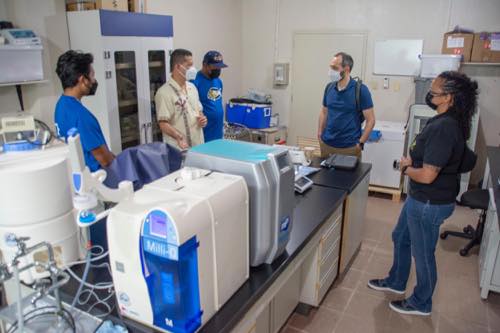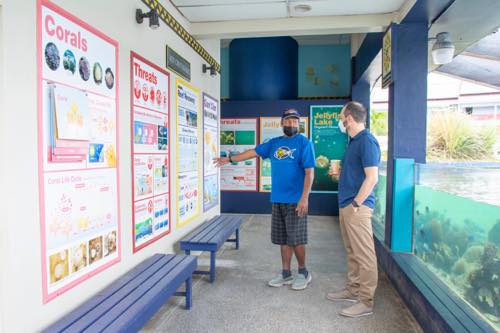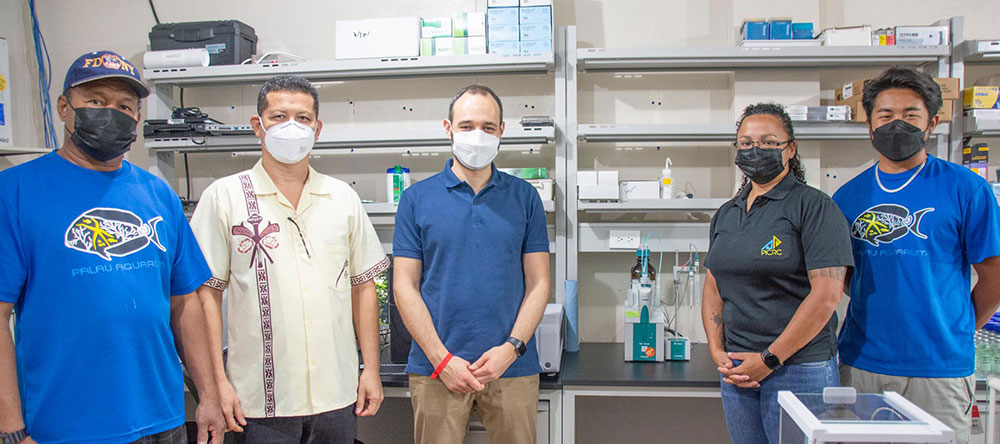- Research
IAEA Supports PICRC on Building Capacity for Climate Change Research
On Tuesday, February 22nd, International Atomic Energy Agency Program Management Officer Javier Romero met with PICRC to discuss plans to support PICRC’s efforts to expand ocean acidification research in Palau. The work is being led by PICRC Research Director, Geraldine Rengiil along with PICRC Researcher Ikelau Otto and Research Assistant McQuinnley Mesengei.

This four-year project is entitled “Enhancing National Capacities of Palau to Monitor and Assess the Impacts of Ocean Acidification” and will establish a state-of-the-art ocean acidification lab at PICRC as well as provide support to further increase the technical capabilities and expertise of the research staff in terms of ocean acidification.
“Ocean acidification is happening all over the world, including Palau” said Otto. “But without proper equipment and expertise, it is difficult to understand how it is affecting our ocean or what we need to do in response. Answering these questions is what the project is about.”
As part of this project, Otto and Mesengei have been awarded an IAEA Fellowship Program with a focus on ocean acidification to be hosted at the University of Hawaii at Manoa. The two-and-a-half month fellowship, led by ocean acidification expert Dr. Christopher Sabine, will prepare them to run the new lab when they return to PICRC.
In addition to the fellowship program, IAEA is supporting an Expert Mission from Stanford University Professor Robert Dunbar to guide the lab’s development. Professor Dunbar is currently hosting weekly virtual trainings on ocean acidification and the ocean carbon cycle and plans to visit PICRC in person this April.
“I’m very excited that we were able to have this meeting with IAEA” continued Otto. “This project is a big step forward for our ocean acidification research, to not only monitor Palau’s waters but to also conduct experiments and learn more about our reefs. Once the lab is up and running, it could serve as a research center for the entire Pacific region”.




